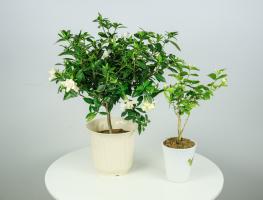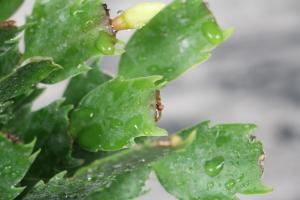Can You Use Potting Soil for Outdoor Plants?
When it comes to growing plants, the soil is an essential factor to consider. Potting soil is an excellent choice for indoor plants, but can it be used for outdoor plants too? In this article, we will explore whether you can use potting soil for outdoor plants and what are the benefits and disadvantages of doing so.
Potting Soil vs. Garden Soil
Potting soil and garden soil are not the same things. Garden soil is the soil found in your yard, whereas potting soil is a mixture of various materials such as peat moss, vermiculite, perlite, and compost. The main difference between the two is that garden soil is designed to provide nutrients to plants over a long period, whereas potting soil is made to promote drainage and water retention, which is ideal for indoor plants that require more frequent watering.
Benefits of Using Potting Soil for Outdoor Plants
Potting soil has several benefits when used for outdoor plants. One of the most significant benefits is that it is free of disease and pests that are commonly found in garden soil. Using potting soil also reduces the risk of contaminants and pollutants that may be present in garden soil. Additionally, potting soil is lightweight and easy to handle, making it ideal for plants that require regular repotting.
Disadvantages of Using Potting Soil for Outdoor Plants
Despite its benefits, using potting soil for outdoor plants also has some disadvantages. First, potting soil is not as nutrient-rich as garden soil, which can limit the growth and development of plants over time. Second, the cost of potting soil can be more expensive than garden soil, depending on the brand and the amount needed. Finally, potting soil needs to be replaced more frequently compared to garden soil, which can add to the overall maintenance cost of gardening.
When to Use Potting Soil for Outdoor Plants
While potting soil is not an ideal choice for all outdoor plants, it can be used for specific species that require good drainage and aeration. Some examples of plants that benefit from potting soil include succulents, cacti, and plants that grow in containers or raised beds. However, if your outdoor plants are grown in the ground, it is recommended to use garden soil instead of potting soil.
Tips for Using Potting Soil for Outdoor Plants
If you decide to use potting soil for outdoor plants, here are some tips to help you get the best results:
Make sure to choose a high-quality potting soil that is specifically designed for outdoor plants.
Water your plants regularly, as potting soil tends to dry out more quickly than garden soil.
Consider mixing potting soil with garden soil or compost to provide additional nutrients to your plants.
Avoid using potting soil for plants that require high levels of nutrients, such as vegetables and fruits.
Re-pot your plants every year to ensure they have fresh soil.
Conclusion
Potting soil is an excellent option for indoor plants, but it can also be used for some outdoor plants. It's crucial to understand the benefits and disadvantages of using potting soil before deciding to use it for your outdoor plants. With the tips provided in this article, you can make an informed decision and ensure that your plants thrive and grow in the best soil possible.

 how many times do yo...
how many times do yo... how many planted tre...
how many planted tre... how many pine trees ...
how many pine trees ... how many pecan trees...
how many pecan trees... how many plants comp...
how many plants comp... how many plants can ...
how many plants can ... how many plants and ...
how many plants and ... how many pepper plan...
how many pepper plan...
































